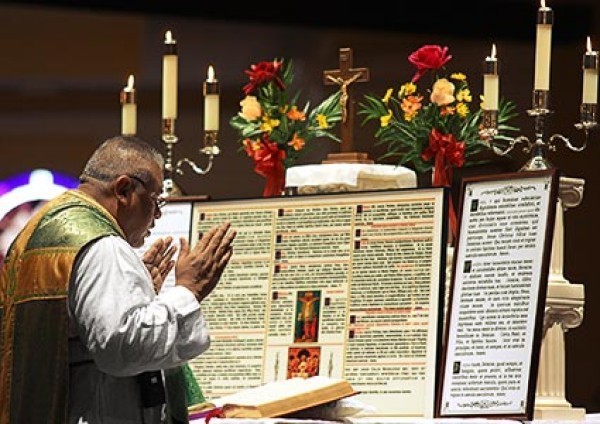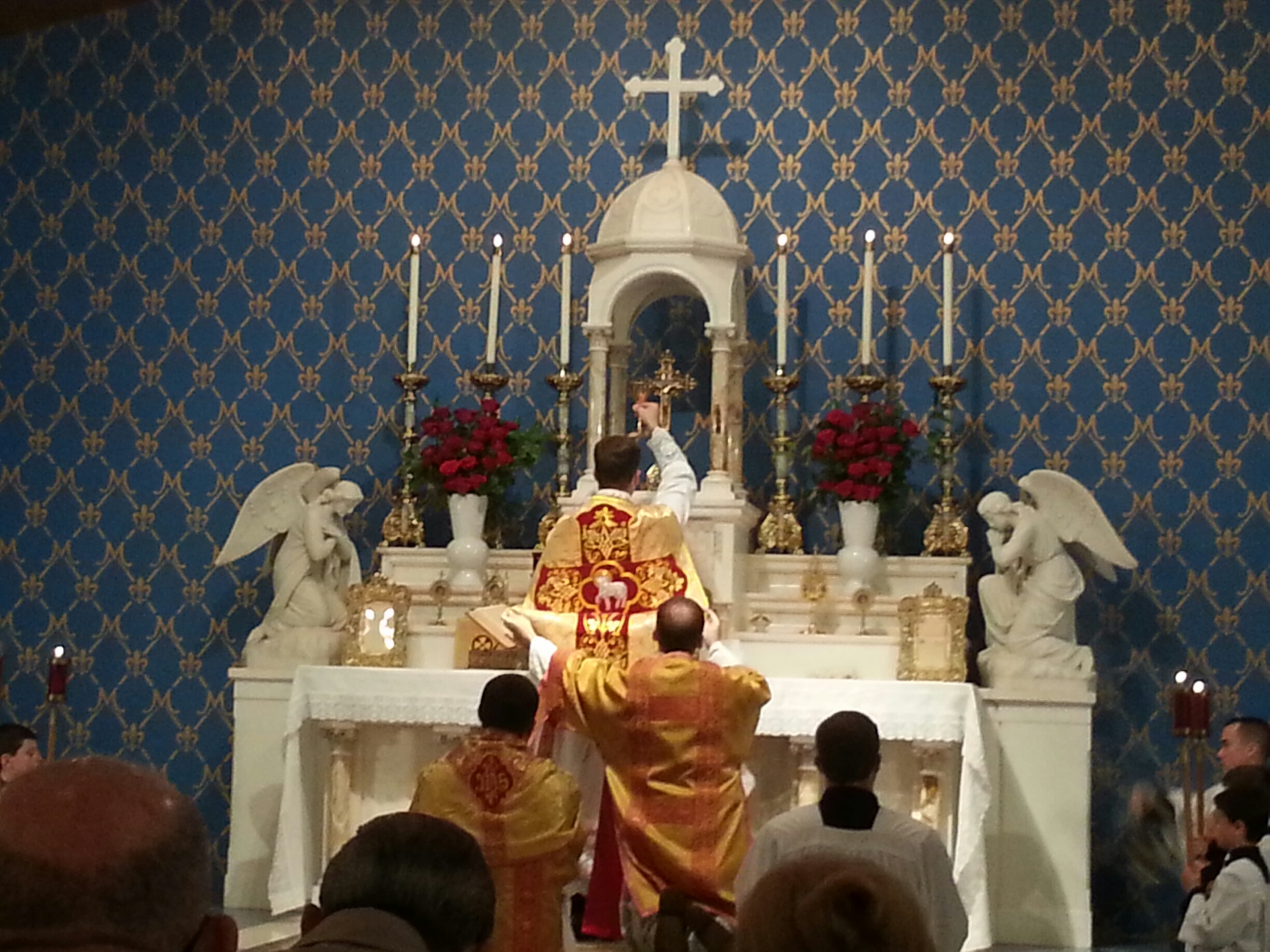They seem necessary to modern "indult", irregular celebrants of the pre-Conciliar Latin rites who say no variation of these prayers in English or Latin throughout the week. Lavabo inter innocentes manus meas or Lava me Domine?
Altar cards are something of an anomaly, if only because they pertain to prayers by the priest that were once private devotions, with the exception of the Gloria and Creed. Moreover, these prayers, personal in origin, varied considerably across the Latin Church. The dual offering of the bread and the chalice is unique to south, central Europe. Northern and far Western Europe preferred the single offering with the paten sitting on top of the prepared chalice. One presumes that with enough repetition and decent command of the Latin language one might eventually learn the Offerimus tibi and the Placeat within a few weeks.
I recall reading somewhere, but cannot recall where, that the Tridentine Missal of St Pius V (the actual one, not everything from Trent to '64) only mentions the central card and says that it may rest against the Crucifix. Tabernacles did not occupy the central place of the main altar yet; a great many were simple holes in the wall, which Trent addressed. The Caeremoniale episcoporum directs that if a bishop is to pontificate at an altar where the Sanctissimum is reserved, it is to be removed to another altar. Presumably, priests were saying their Office regularly enough to memorize psalm 25 and the medieval practice was to recite St. John's prologue during the return to the sacristy. Even after Trent many Gallican usages describe the celebrant reciting the Last Gospel, if it is not proper, during the return to the sacristy at high Mass; the familiar Roman recitation at the altar was reserved to low Mass only. Archbishop Lefebvre was once accused of modernism for "skipping the Last Gospel" when in fact he followed the rubrics of episcopal ceremony by reciting it during the recession. Could the received Roman practice of saying it at the altar at the end of high Mass be inaccurate? Could it still have been said the medieval way at high Mass until the invention of the outside cards?
 |
| source: wikipedia.org |
I never understood why the cards were necessary before the changes to the ordo Missae of the 1960s. Still, they have utility for the modern, occasional celebrant.


Here in Bavaria, altar cards still continue an interesting afterlife as decoration on almost every side- or high altar in Baroque and Rococo churches. Just like flowers and candle, they just have to be there, it seems. In some places, they have actually been worked into the reredos and are therefore irremovable.
ReplyDeleteIn Baroque churches in Portugal I have seen the words of consecration engraved a bit above the mensa of side altars (the church where we were married has about 6 like this).
DeleteI've often wondered as well about their use if one is celebrating the same Mass day in day out. I know a priest back home who, though he celebrates the NO in the vernacular, knows the Canon by heart, as he uses it at every Mass (I don't think I've ever seen him flip through the missal while praying the Canon).
ReplyDeleteI happen to have some Bragan rite altar cards which were printed not too long ago and given me for publicizing the printer(?) on one of my blogs.
ReplyDeleteI still have a small sheet of paper lying on the altar near the crucifix (I have a hanging pyx) to act as a prompt for the offertory prayers and the placeat prayer. My altar is so nice and uncluttered without altar cards. Same with flowers - I won't have them on the altar, just a single vase away from the altar for major feasts.
ReplyDeleteThe text in question lasted a lot longer than the 1570 edition of the Missal and survived right up until the new rubrics of 1960/1. Hitherto R.G. XX '...Ad Crucis pedem ponatur Tabella Secretarum appellata.' In the re-written rubrics this was replaced by No. 527 which speaks of 'tabellae [note plural] secretarum' adding they should only be on the altar for the celebration of the Eucharist.
ReplyDeleteI see what you're describing. But in the only Catholic Cathedral I attended Mass here in Bucharest, there were no such things. The priest knew his part by heart, some parts in Latin some in Romanian. In Orthodox churches too the priest says by heart and also reads, the leturgy is 2 hrs ling though, and I for one don't find it less faithful to just read. It's the words that echo in people's hearts what matters most, no? The priests work in many ways, but what they always do is channel the Holy Spirit into us. Yes I sound like a clericalist, yet one who is shocked at certain parts signed in Crete so I am not a clericalist (like - gay people are limbs of Church? They are like we all sons of God, lost imho, but limbs of Church.. even if the Synod disapproved of their unions...). If a priest reads or recites, God is still there imho. We shouldn't place our selves above the miracle of Christ and we shouldn't expect priests to do so either.
ReplyDeleteAd Orientem is a more lucrative discussion I think, because the priest - shepherd, works in flesh as such when facing the Altar and Christ, together with all of us.
We are so tiny... so is the priest, let's not forget.
As a practical matter, I know of two reasons for the altar cards: first, the central (and only absolutely necessary) card is for ensuring the greatest certainty that the "form" of consecration has been recited correctly. (Sounds unnecessary, I know, but you would be surprised what kind of distractions, internal and external, can arise even at that most solemn moment.) The other reason is simply for the ease of the celebrant should he be distracted or suffer a momentary memory-block; the cards help one avoid flipping through the Missal hurriedly trying to find the prayers. (For the prayers at the foot of the altar, the fact that they're recited aloud with someone to respond makes it easier to avoid memory-blocks.) Having said that, though, I have to confess that it's rare for me at this late date (having memorized the entire Ordo Missae) to go completely "off the rails," even with a distraction-inducing congregation, but the cards do provide a certain "security blanket" comfort.
ReplyDelete